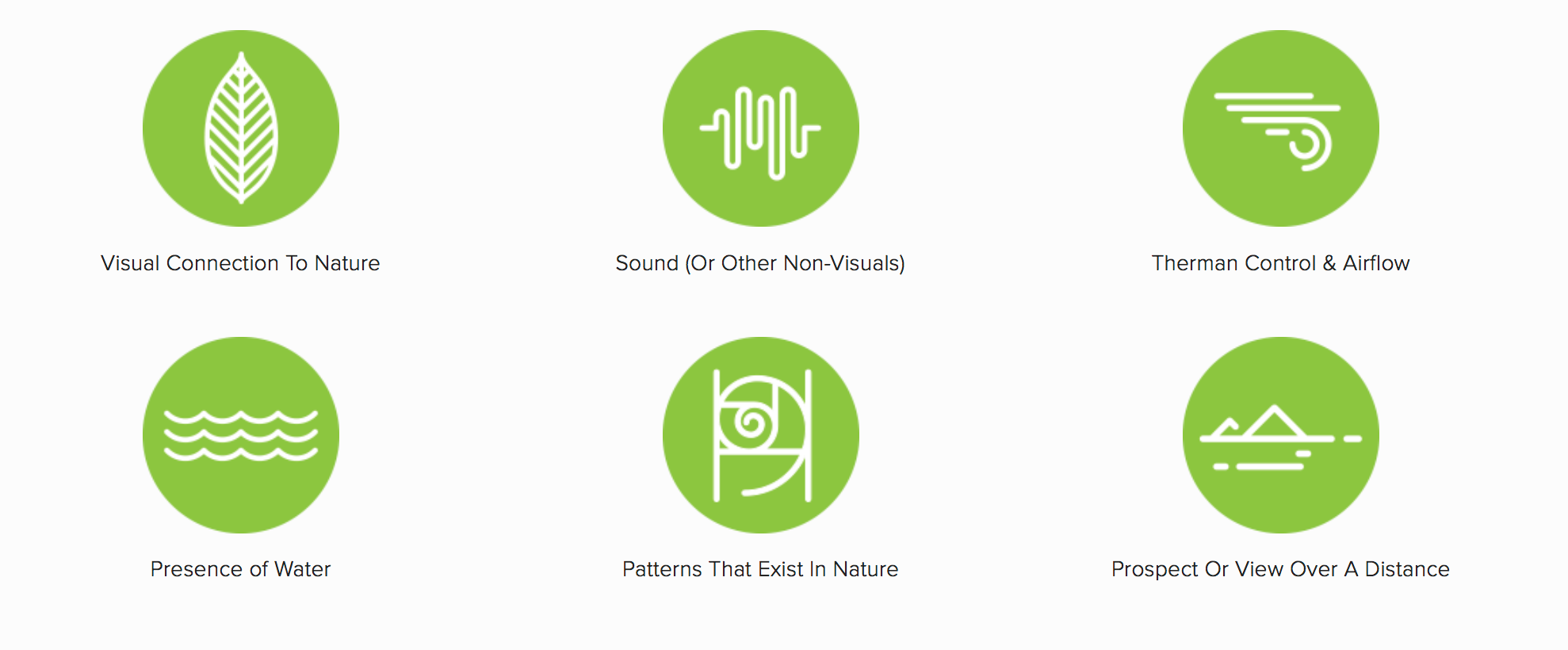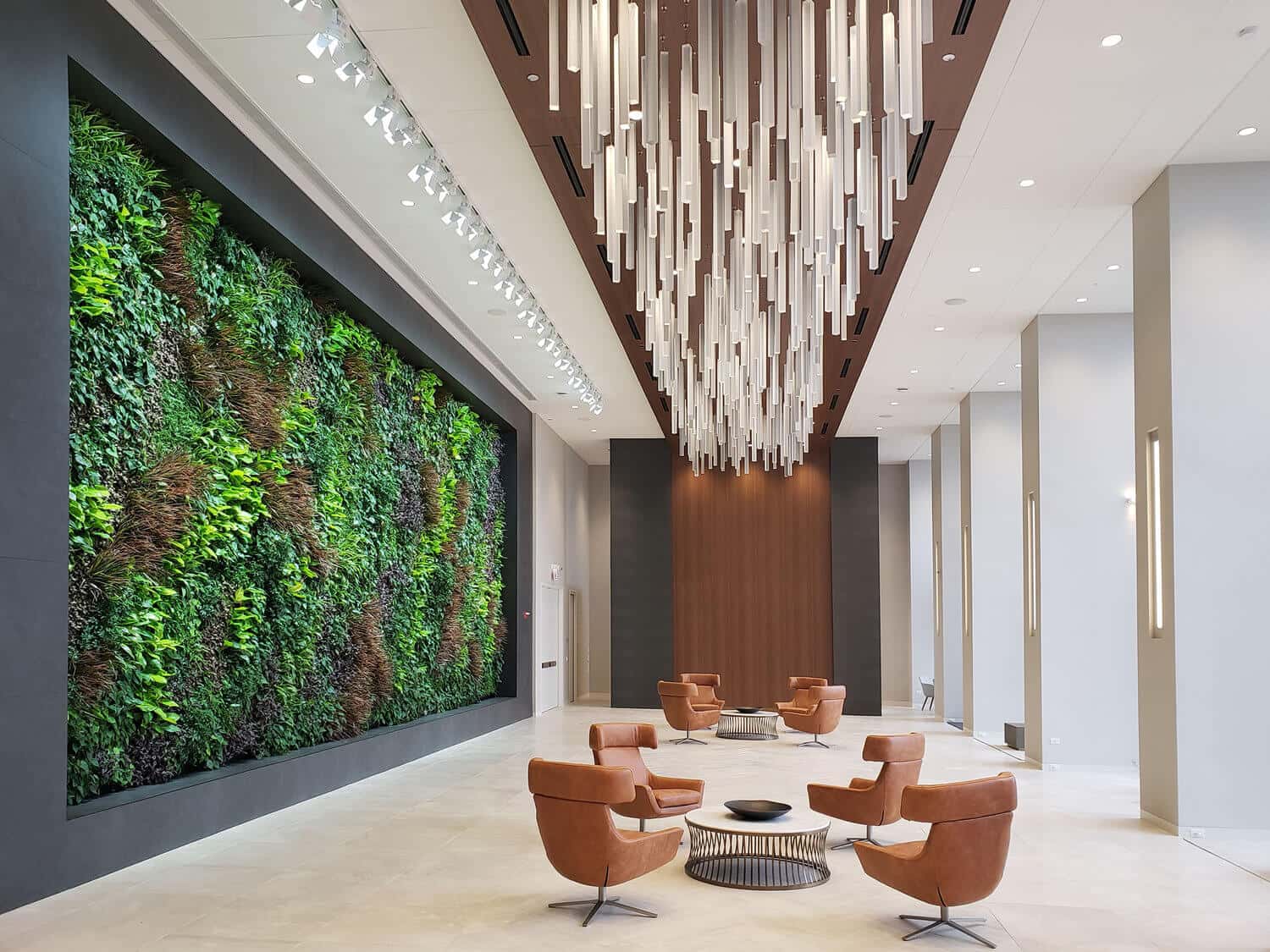Table Of Content

A small landscaped area is enough nature, especially if it offers a diversity of wildlife. Many studies reveal how vital nature is to our well-being on a biological level. There are LED lights designed to follow the natural pattern of daylight, which improves focus levels and regulates circadian rhythms. Due to these light patterns, you’ll experience better sleep and enjoy more energy throughout the day. Accent pieces in cotton or natural linen bring texture and an organic look to any room. A live-edge dining room table is a great way to embrace biophilic design in your living space.
Khoo Teck Puat Hospital
However, Urban environments dwellers will have increasingly fewer opportunities to get in touch with Nature. Therefore, it becomes important to create Urban environments that will stimulate our biophilia as much as possible (Beatley, 2011; Hartig and Kahn, 2016; Söderlund, 2019). Biophilic design has been suggested as a way to meet this need (Kellert et al., 2008). The goal of biophilic design is to create artificial environments as similar as possible to natural ones, to ensure the positive effect that Nature has on people’s health and wellbeing (Söderlund, 2019; Browning and Ryan, 2020). Over the past 15 years, several biophilic design models have been suggested (see Table 2), which have often been implemented in advanced building certification systems (WELL, 2016a,b; LBC, 2017; LEED, 2018). Despite their specific differences, the criteria adopted by the various biophilic design models seem to respond to psychological needs matured over the course of evolution (for more details, see Bolten and Barbiero, 2020).
1 What is Good Biophilic Design?
A Visual Connection with Nature is a view to elements of nature, living systems and natural processes. Some patterns, such as [P13] Mystery and [P14] Risk/Peril, might not be as feasible or cost-effective in an interior fit-out project because of the amount of space required to effectively implement the pattern. On the other hand, interior fit-outs are an excellent opportunity to introduce Natural Analogue patterns which can be applied to surfaces like walls, floors, and ceilings as well as furniture and window treatments. Some patterns (e.g., P2, P4, P6, P7) are more visceral or temporal, requiring little to no floor area, and other patterns (e.g., P8-P10) may simply guide design choices that were already a part of the design process. No two places are the same; this presents both challenges and opportunities for creativity in the application of biophilic design patterns. Discussed here are some key considerations that may help frame, prioritize, or influence decision making in the design process.
Here's how you can infuse biophilic design into the future of workplace design.
Dynamic & Diffuse Light leverages varying intensities of light and shadow that change over time to create conditions that occur in nature. Providing variable conductance materials, seating options with differing levels of solar heat gain (indoors and outdoors) or proximity to operable windows – as welcome as catching a cooling breeze on a sunny day or leaning one’s back on a warm rock on a cool day – could improve the overall satisfaction of a space. The Dockside Green community on Vancouver Island, Victoria, BC Canada, is a great example of non-rhythmic stimuli. The implementation of habitat restoration and rainwater management has led to ephemeral experiences of swaying grasses, falling water and the buzz of passing insects and animals that are visible from walkways, porches, and windows around the community. A fountain and gardens in the Calat Alhambra in Granada, Spain provide a non-visual experience of nature.
studio gang's biophilic 'populus' will mimic aspen trees in denver - Designboom
studio gang's biophilic 'populus' will mimic aspen trees in denver.
Posted: Sat, 09 Dec 2023 08:00:00 GMT [source]
Biophilic Design Conference Nov 2024
Environmental Generational Amnesia and the Ecological Aesthetic Theory help explain how some perspectives may have evolved, and these differences come to bear across countries and regions, as well as among neighborhoods within the same city. Cognitive functioning encompasses our mental agility and memory, and our ability to think, learn and output either logically or creatively. For instance, directed attention is required for many repetitive tasks, such as routine paperwork, reading and performing calculations or analysis, as well as for operating in highly stimulating environments, as when crossing busy streets. Directed attention is energy intensive, and over time can result in mental fatigue and depleted cognitive resources (e.g.,19. Kellert et al., 2008 ; 20. van den Berg et al., 2007 ).
Aidlin Darling Design's new retreat for Expedia Group is a futuristic, biophilic building in Seattle, where form follows ... - Global Design News
Aidlin Darling Design's new retreat for Expedia Group is a futuristic, biophilic building in Seattle, where form follows ....
Posted: Mon, 09 Oct 2023 07:21:20 GMT [source]
It is therefore presumable that the restorative environment was perceived with such places. Biophilic design has financial value and can enhance mental and physical health. It teaches valuable skills such as accepting uncertainty, confronting perfectionism, being present, connecting to the earth, connecting with other people, and adopting healthy eating and exercise habits.
Erich Fromm’s Ontogenetic Perspective

Unfortunately, too much of our modern design is oblivious to this profound knowledge. When asking people to think about their favorite places for vacation, the majority will describe some place outdoors; we use the term ‘recreation’ and forget that recreation is about recreating, restoring ourselves. So while empirical evidence is accumulating, we ought to go about restoring the human-nature connection in the built environment. In evolutionary psychology terms, we should prefer habitats that are similar to the African savannas on which we evolved as a species. This becomes clear in visual preference research starting with Jay Appleton’s Experience of Landscape in 1975, where he asked why certain views from the same vantage point are preferred over others.
Biophilic Design Basics
Biophilic traits could have pleiotropic characteristics; in practice, the same adaptation could prove useful in a different context thanks to an exaptation cycle (Gould and Vrba, 1982). Affiliation with wild Nature could be a “personality trait” with a pleiotropic effect on the perception of a restorative environment and the population density of a certain area. For a Paleolithic human, the usual landscape was devoid of visible places of human aggregation. It is therefore presumable that the restorative environment was perceived without such places. Opposite to that, the landscape of a Neolithic human was characterized by visible places of human aggregation, which were landmarks for orientation and often were the final goal of a transfer.
Use natural colors
Decision makers did not prioritize nature-based opportunities or “design thinking.” Clinical functionality, efficiency, cost restrictions, or habitual practice were often the main concern of healthcare facilities’ design regardless of the patients’ opinion and the quality of their experience. In order to eliminate these barriers, decision makers, designers, management, and administration must have knowledge about the importance of biophilic design so that decisions regarding site, layout, building orientation, surrounding views, and so on can be considered in the planning stage. Skilled professionals need also to consider the repair and maintenance needs of biophilic features within available maintenance budgets.
This can be an affordable biophilia design strategy, with the average cost to install wallpaper being around $500. “When natural views are not readily accessible, there are many materials and objects available that reflect and reference nature,” says Barnard. For a recent home near the ocean, she installed a set of hand-carved American Walnut sconces that were designed to evoke striated sea coral. “The ocean-inspired silhouette embraces organic elements, even when the home is distant from nature,” she explains.
The objective of the Thermal & Airflow Variability pattern is to provide an environment that allows users to experience the sensory elements of airflow variability and thermal variability. The intent is also for the user to be able to control thermal conditions, either by using individual controls, or allowing occupants access to variable ambient conditions within a space. Material Connection with Nature and other biophilic design patterns can be applied across all climates and environments, but may have different resulting forms, aesthetics and materials specific to their respective regions. The term ‘biophilia’ was first coined by social psychologist Eric Fromm (5. The Heart of Man, 1964 ) and later popularized by biologist Edward Wilson (Biophilia, 1984). The sundry denotations – which have evolved from within the fields of biology and psychology, and been adapted to the fields of neuroscience, endocrinology, architecture and beyond – all relate back to the desire for a (re)connection with nature and natural systems.
Solar heat penetrates at distinct locations, the whispering gallery resonates sounds of nature and people, and gardens of rosemary, myrtles, and other fragrant plants surround the premises. The extensive use of water fountains creates a microclimate – the space both sounds and feels cooler – while stone floors and handrails with water channels cool the feet and hands through conductance. Biophilic design is a concept used within the building industry to increase occupant connectivity to the natural environment through the use of direct nature, indirect nature, and space and place conditions. Used at both the building and city-scale, it is argued that this idea has health, environmental, and economic benefits for building occupants and urban environments, with few drawbacks. Although its name was coined in recent history, indicators of biophilic design have been seen in architecture from as far back as the Hanging Gardens of Babylon.
As more realize the benefits and importance of having nature in our lives, creating biophilic design will become the primary goal. The first thing that comes to mind when thinking about biophilic design is plants. It’s certainly a very important part of it but not the only part as you will see below. As well as having indoor plant areas, building green walls and roofs is equally important.
To familiarize the reader with these nature-health relationships, these mind-body systems are discussed here in the briefest sense, and are supported with a table of familiar hormones and neurotransmitters, environmental stressors, and biophilic design strategies. Nature in the Space addresses the direct, physical and ephemeral presence of nature in a space or place. This includes plant life, water and animals, as well as breezes, sounds, scents and other natural elements. Common examples include potted plants, flowerbeds, bird feeders, butterfly gardens, water features, fountains, aquariums, courtyard gardens and green walls or vegetated roofs. The strongest Nature in the Space experiences are achieved through the creation of meaningful, direct connections with these natural elements, particularly through diversity, movement and multi-sensory interactions.

No comments:
Post a Comment